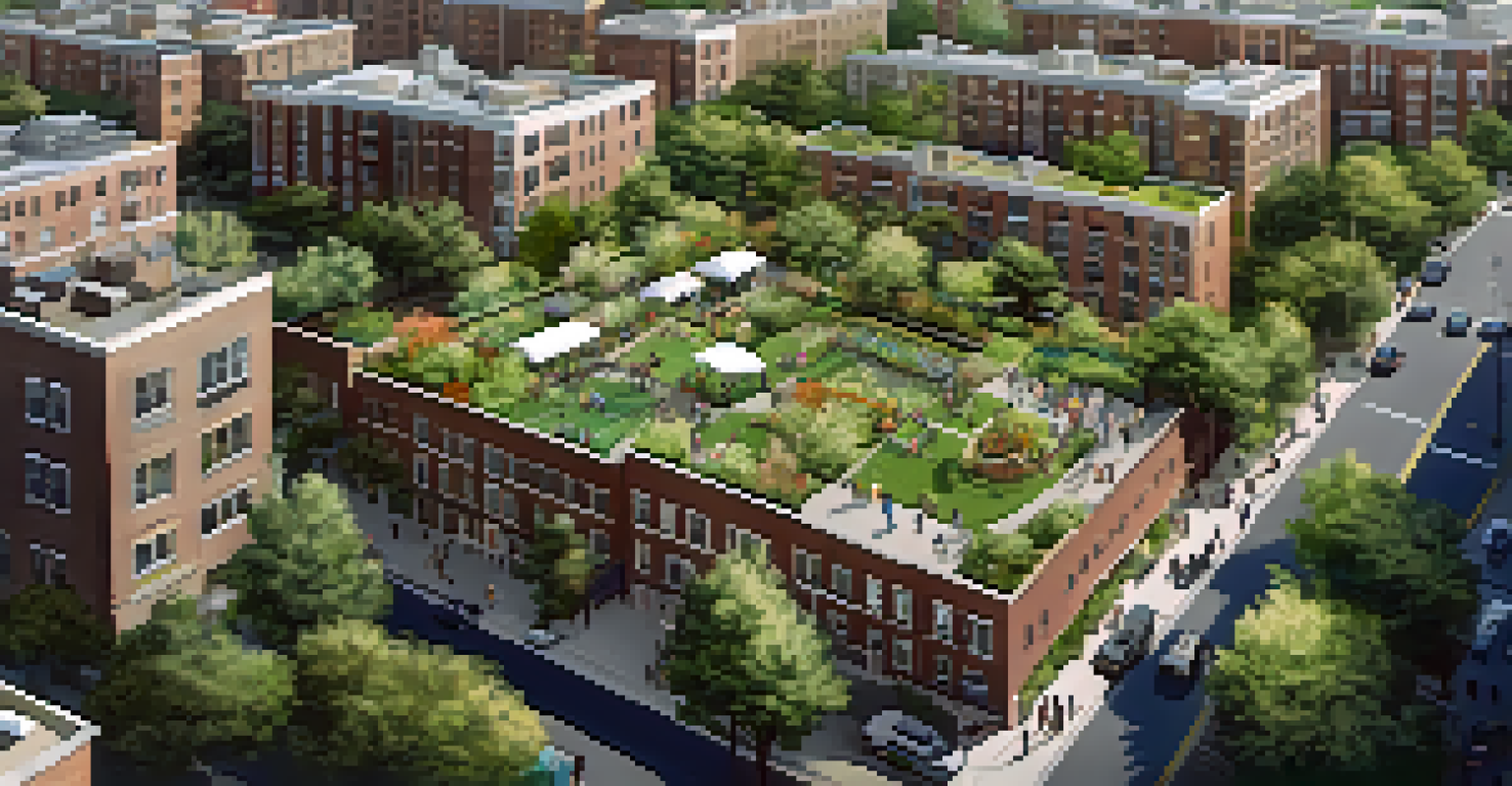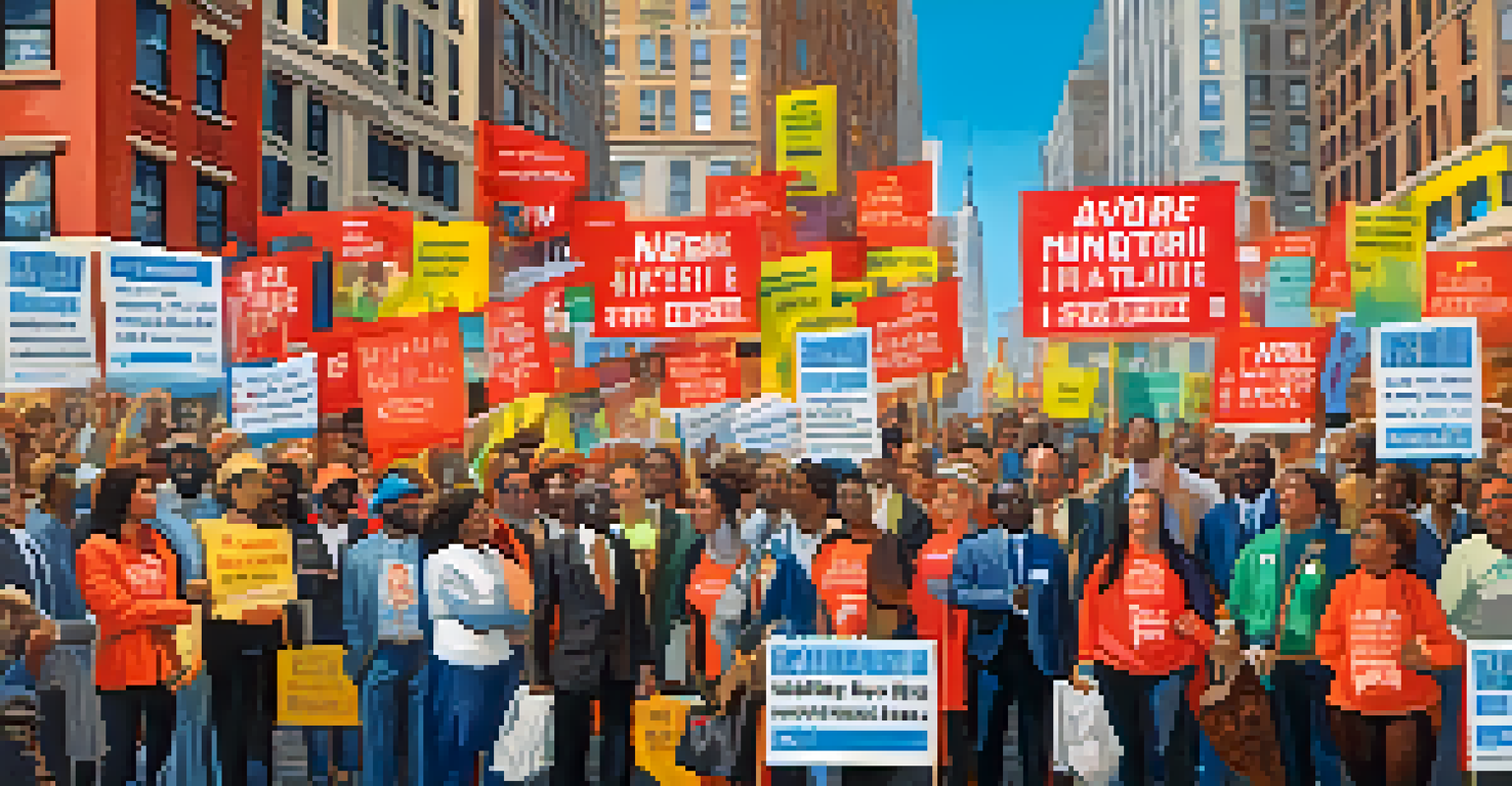Affordable Housing Crisis: Strategies for NYC's Urban Future

Understanding the Affordable Housing Crisis in NYC
New York City has long been a beacon of opportunity, but for many, the dream of affordable housing is slipping away. With skyrocketing rents and limited supply, the city faces a significant housing crisis that affects its most vulnerable populations. This situation is exacerbated by gentrification and rising living costs, making it increasingly difficult for average New Yorkers to find suitable homes.
Housing is a human right. It should not be a privilege for the few.
At its core, the affordable housing crisis reflects a disconnect between income levels and housing prices. Many residents spend more than 30% of their income on rent, leading to financial strain and instability. The city's rich cultural tapestry is at risk of being unraveled if diverse communities are pushed out due to unaffordable living conditions.
To navigate this complex issue, it's crucial to understand the root causes and the demographics affected. By examining the statistics and stories behind this crisis, we can lay the groundwork for meaningful solutions that prioritize housing as a basic human right.
Government Initiatives: Policies That Make a Difference
In response to the housing crisis, various government initiatives aim to increase affordable housing options in NYC. Programs like the Inclusionary Housing Program incentivize developers to set aside a portion of new units for low-income residents. This not only helps to balance the housing market but also fosters a sense of community within diverse neighborhoods.

Additionally, the city's 421-a tax exemption program encourages the construction of rental units by providing tax breaks to developers. While these initiatives are steps in the right direction, they must be continually assessed and updated to ensure they meet the current needs of the population. It's essential for policymakers to engage with residents to understand their needs and adjust strategies accordingly.
Affordable Housing Crisis Explained
NYC faces an affordable housing crisis due to rising rents and a disconnect between income levels and housing prices.
Moreover, transparency and accountability in these programs are vital. By requiring regular reporting on the effectiveness of these initiatives, we can ensure that they are genuinely contributing to alleviating the affordable housing crisis.
Community Land Trusts: A Model for Stability
Community Land Trusts (CLTs) are emerging as an innovative solution to the affordable housing crisis. By allowing communities to collectively own and manage land, CLTs provide a stable foundation for affordable housing that is less susceptible to market fluctuations. This model empowers residents, giving them a say in decisions that affect their living conditions.
Affordable housing is not just about bricks and mortar; it's about lives and livelihoods.
In NYC, CLTs have been successful in creating not only affordable housing but also community resources like gardens and recreational spaces. These initiatives foster a sense of ownership and pride among residents, which can lead to stronger, more resilient neighborhoods. The collaborative nature of CLTs also promotes inclusivity, ensuring that diverse voices are heard in the planning process.
As cities grapple with the challenges of affordability, the CLT model illustrates how community-driven solutions can lead to sustainable outcomes. By prioritizing long-term stability over short-term profits, we can rethink the way urban spaces are developed and maintained.
Zoning Changes: Rethinking Urban Development
Zoning laws play a critical role in shaping a city's housing landscape, but they often restrict the development of affordable units. By advocating for zoning changes that allow for increased density and mixed-use developments, cities can create more housing options. These changes could enable the construction of affordable units in areas that are currently off-limits due to restrictive zoning regulations.
The concept of upzoning, or allowing taller buildings in certain neighborhoods, can significantly increase the housing supply. This approach, however, must be balanced with considerations for infrastructure, green spaces, and community needs. Engaging with local residents during the planning process is essential to ensure that new developments benefit the community rather than displace it.
Community Land Trusts Offer Solutions
Community Land Trusts empower residents to collectively manage land, creating stable, affordable housing opportunities.
Ultimately, strategic zoning changes can lead to more inclusive urban environments. By diversifying the types of housing available, cities can better accommodate a range of income levels, promoting a richer tapestry of life within urban areas.
Private Sector Involvement: Collaborating for Solutions
The private sector has a crucial role to play in addressing NYC's affordable housing crisis. By collaborating with non-profits and government agencies, developers can create housing solutions that not only meet market demands but also cater to the needs of low-income families. Public-private partnerships can leverage resources and expertise to develop innovative projects that prioritize affordability.
For instance, some developers are exploring alternative building methods, such as modular construction, which can reduce costs and construction time. These efficiencies can translate into lower rents for residents, making housing more accessible. Additionally, integrating affordable units into market-rate developments can help to create mixed-income communities that promote social equity.
However, this collaboration must be rooted in a commitment to community welfare. Developers should engage with local residents to ensure that their projects reflect the needs and desires of the neighborhoods they aim to serve.
Innovative Financing: Funding Affordable Housing Projects
One of the biggest hurdles in creating affordable housing is securing adequate funding. Innovative financing models, such as social impact bonds and community investment funds, are emerging as potential solutions. These models can attract private investment while ensuring that funds are directed toward projects that provide affordable housing options.
For instance, social impact bonds allow private investors to fund housing projects, with returns tied to the success of the initiative in reducing homelessness or increasing housing stability. This approach not only brings in much-needed capital but also incentivizes developers to prioritize social outcomes over profit.
Advocacy Drives Housing Policy Change
Grassroots advocacy is crucial for amplifying community voices and influencing policies that address the affordable housing crisis.
Moreover, engaging local banks and credit unions in financing affordable housing can create a more sustainable funding ecosystem. By fostering relationships with community lenders, developers can access tailored financial products that support the creation of affordable units.
The Role of Advocacy: Community Voices Matter
Advocacy is a powerful tool in the fight for affordable housing in NYC. Grassroots organizations and community groups are essential in amplifying the voices of those most affected by the housing crisis. By organizing campaigns and rallies, these advocates can raise awareness about the urgent need for affordable housing and press local officials to take action.
Moreover, advocacy efforts can lead to tangible policy changes. When communities come together to demand action, they can influence zoning laws, funding allocations, and housing policies. This collective power not only brings attention to the issue but also fosters a sense of solidarity among residents.

Ultimately, the success of affordable housing initiatives hinges on the engagement of the community. When residents are empowered to voice their concerns and desires, they can play a pivotal role in shaping the future of their neighborhoods.